Abstract
Extraembryonic membranes and fetal tissues were obtained from 55 specimens of 5--11 weeks conceptual age. The glucose-6-phosphate dehydrogenase (G6PD) electrophoretic phenotype was determined and correlated with that of maternal blood. Fifteen specimens were heterozygous for G6PD A, and for nine of these the maternal allele could be determined. In none of these specimens did the isozyme pattern of the membraneous chorion or chorionic villi differ significantly from that of fetal tissue. We have obtained no evidence of non-random inactivation in extraembryonic membranes of human fetal specimens at this stage of development.
Full text
PDF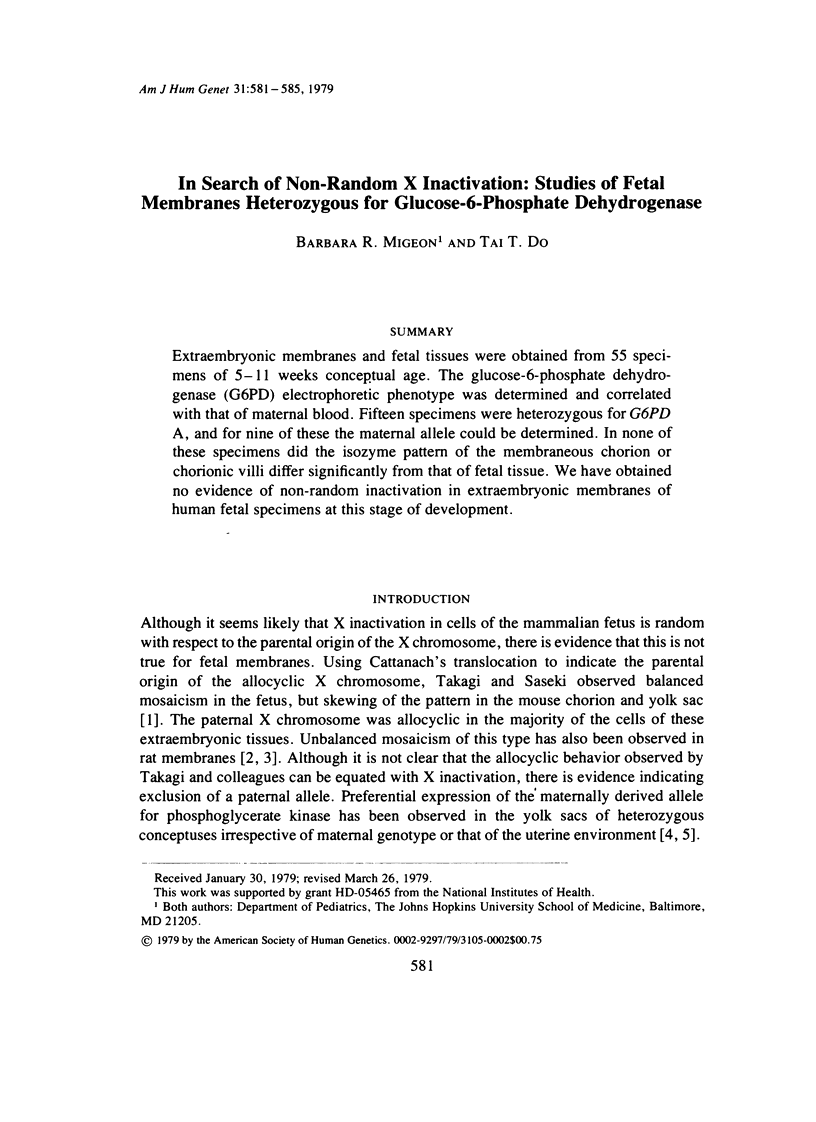
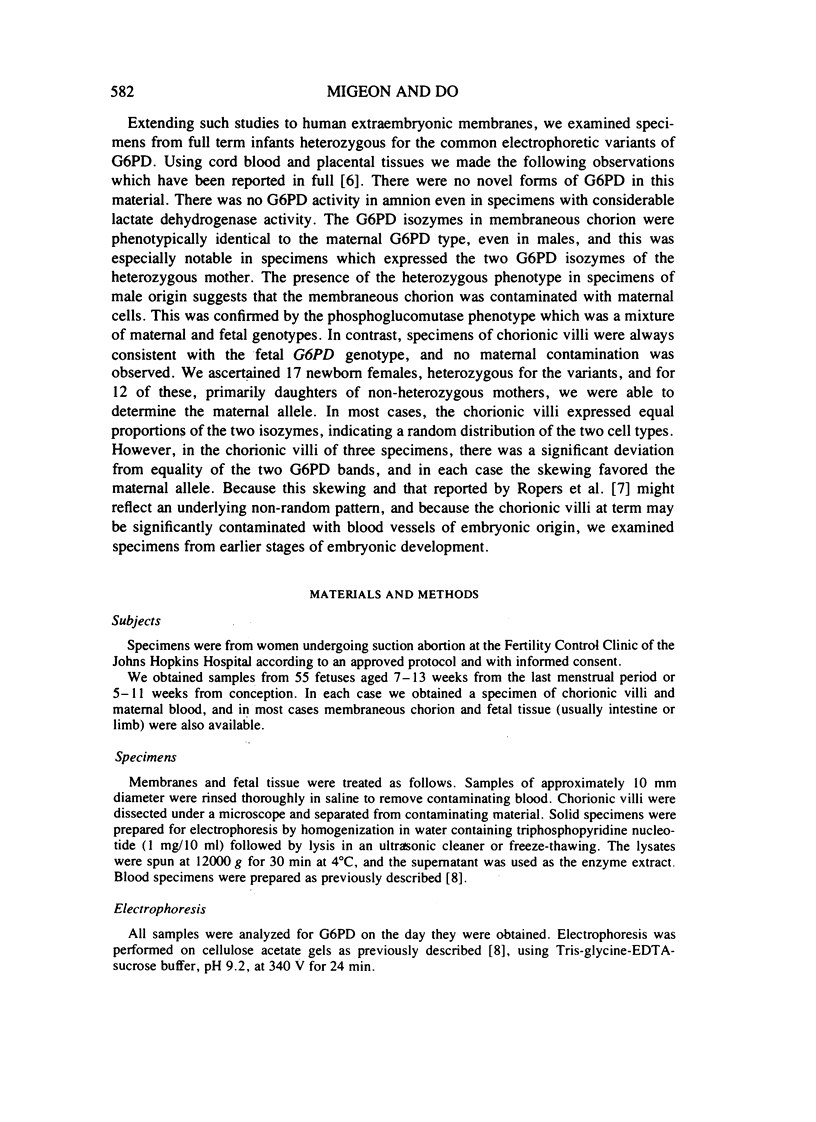
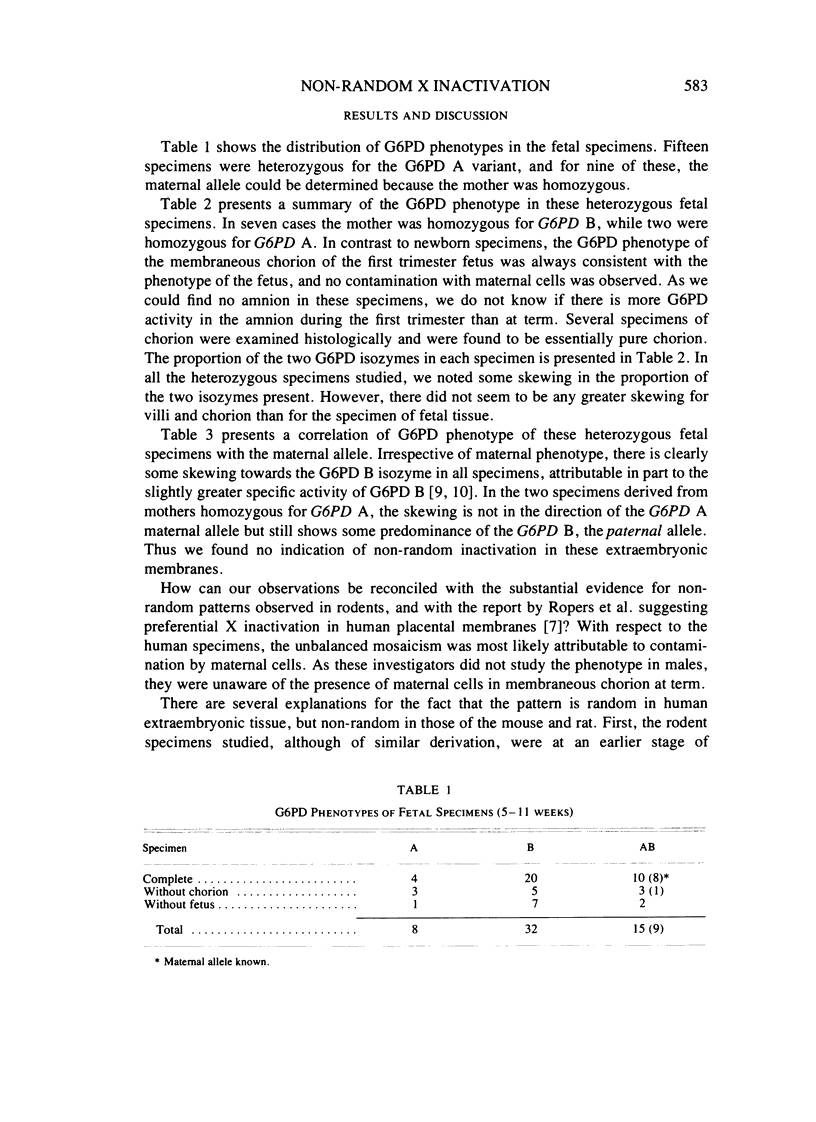
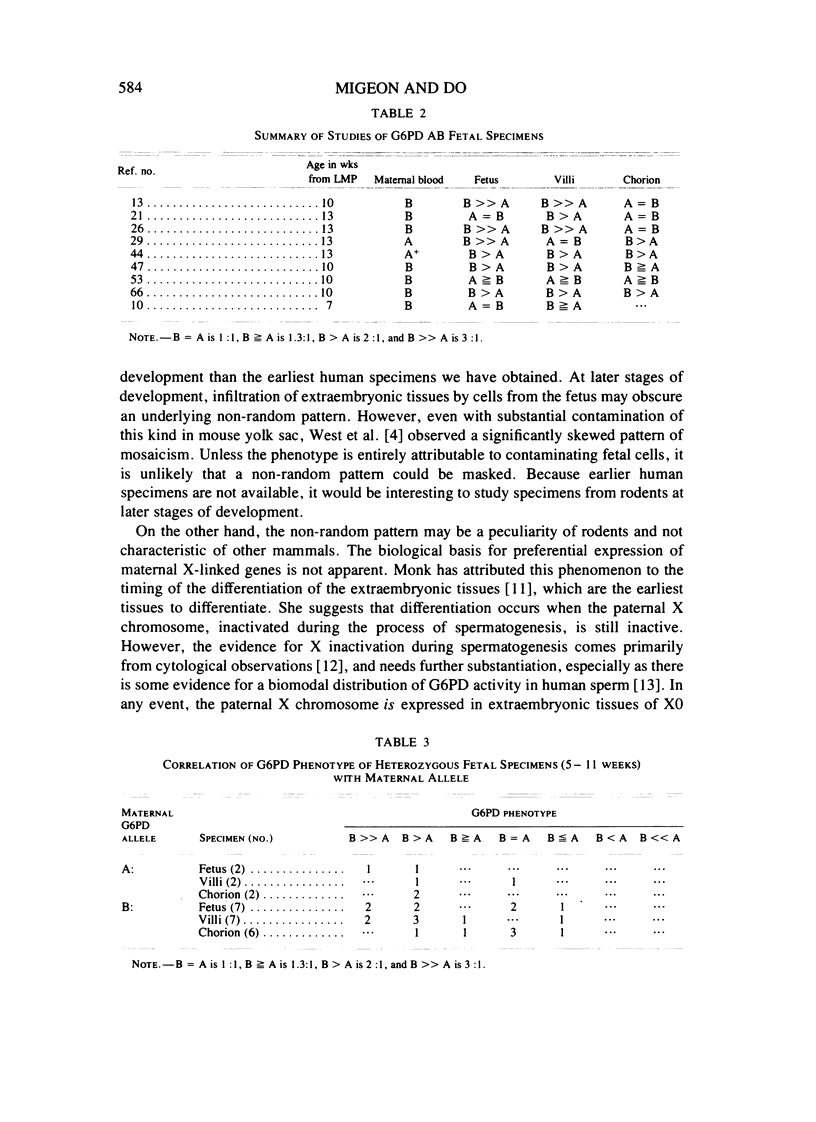
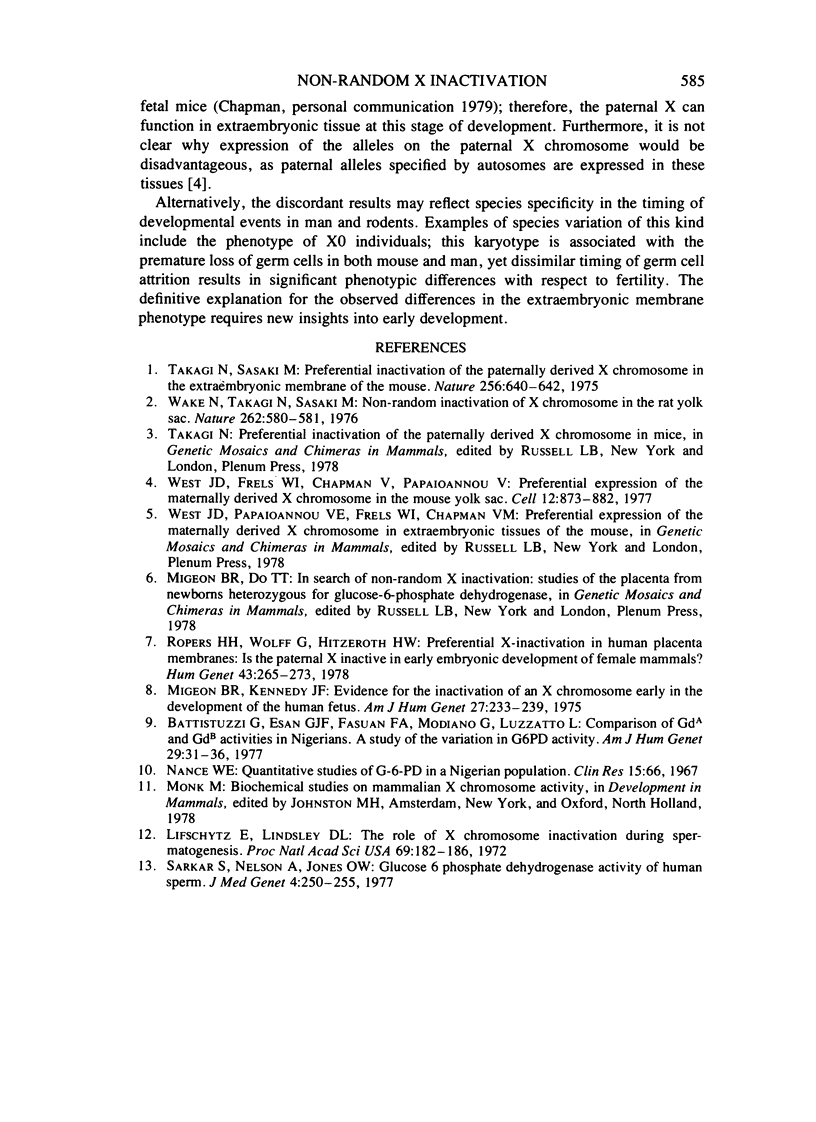
Selected References
These references are in PubMed. This may not be the complete list of references from this article.
- Battistuzzi G., Esan G. J., Fasuan F. A., Modiano G., Luzzatto L. Comparison of GdA and GdB activities in Nigerians. A study of the variation of the G6PD activity. Am J Hum Genet. 1977 Jan;29(1):31–36. [PMC free article] [PubMed] [Google Scholar]
- Lifschytz E., Lindsley D. L. The role of X-chromosome inactivation during spermatogenesis (Drosophila-allocycly-chromosome evolution-male sterility-dosage compensation). Proc Natl Acad Sci U S A. 1972 Jan;69(1):182–186. doi: 10.1073/pnas.69.1.182. [DOI] [PMC free article] [PubMed] [Google Scholar]
- Migeon B. R., Kennedy J. F. Evidence for the inactivation of an X chromosome early in the development of the human female. Am J Hum Genet. 1975 Mar;27(2):233–239. [PMC free article] [PubMed] [Google Scholar]
- Ropers H. H., Wolff G., Hitzeroth H. W. Preferential X inactivation in human placenta membranes: is the paternal X inactive in early embryonic development of female mammals? Hum Genet. 1978 Sep 19;43(3):265–273. doi: 10.1007/BF00278833. [DOI] [PubMed] [Google Scholar]
- Sarkar S., Nelson A. J., Jones O. W. Glucose-6-phosphate dehydrogenase (G6PD) activity of human sperm. J Med Genet. 1977 Aug;14(4):250–255. doi: 10.1136/jmg.14.4.250. [DOI] [PMC free article] [PubMed] [Google Scholar]
- Takagi N., Sasaki M. Preferential inactivation of the paternally derived X chromosome in the extraembryonic membranes of the mouse. Nature. 1975 Aug 21;256(5519):640–642. doi: 10.1038/256640a0. [DOI] [PubMed] [Google Scholar]
- Wake N., Takagi N., Sasaki M. Non-random inactivation of X chromosome in the rat yolk sac. Nature. 1976 Aug 12;262(5569):580–581. doi: 10.1038/262580a0. [DOI] [PubMed] [Google Scholar]
- West J. D., Frels W. I., Chapman V. M., Papaioannou V. E. Preferential expression of the maternally derived X chromosome in the mouse yolk sac. Cell. 1977 Dec;12(4):873–882. doi: 10.1016/0092-8674(77)90151-9. [DOI] [PubMed] [Google Scholar]


